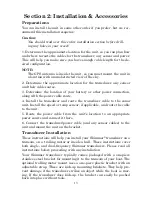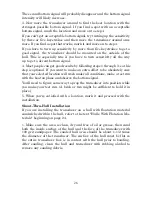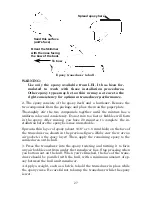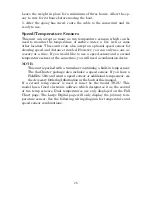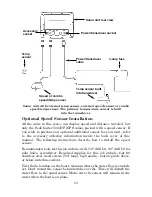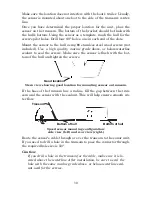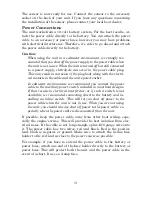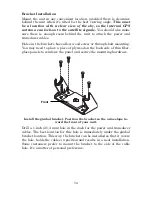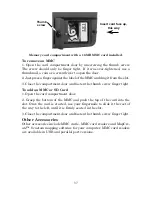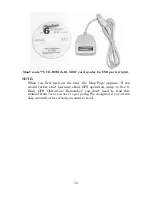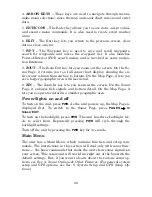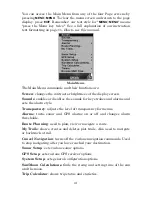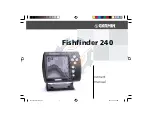
27
Epoxy transducer to hull.
WARNING:
Use
only
the epoxy available from LEI. It has been for-
mulated to work with these installation procedures.
Other epoxy types may be too thin or may not cure to the
right consistency for optimum transducer performance.
2. The epoxy consists of the epoxy itself and a hardener. Remove the
two compounds from the package and place them on the paper plate.
Thoroughly stir the two compounds together until the mixture has a
uniform color and consistency. Do not mix too fast or bubbles will form
in the epoxy. After mixing, you have 20 minutes to complete the in-
stallation before the epoxy becomes unworkable.
Spread a thin layer of epoxy (about 1/16" or 1.5 mm thick) on the face of
the transducer as shown in the previous figure.
Make sure there are no
air pockets in the epoxy layer!
Then, apply the remaining epoxy to the
sanded area on the hull.
3. Press the transducer into the epoxy, twisting and turning it to force
any air bubbles out from under the transducer face. Stop pressing when
you bottom out on the hull. When you're finished, the face of the trans-
ducer should be parallel with the hull, with a minimum amount of ep-
oxy between the hull and transducer.
4. Apply a weight, such as a brick, to hold the transducer in place while
the epoxy cures. Be careful not to bump the transducer while the epoxy
is wet.
Spread epoxy here
Sand this surface
(unit's face)
Orient the Skimmer
with the nose facing
the bow of the boat.
To bow
Summary of Contents for IntelliMap 502C iGPS
Page 92: ...84 Notes ...
Page 188: ...180 Notes ...
Page 189: ...181 Notes ...
Page 190: ...182 Notes ...

